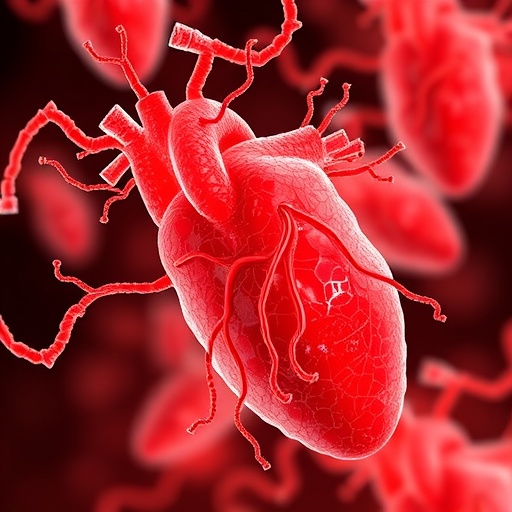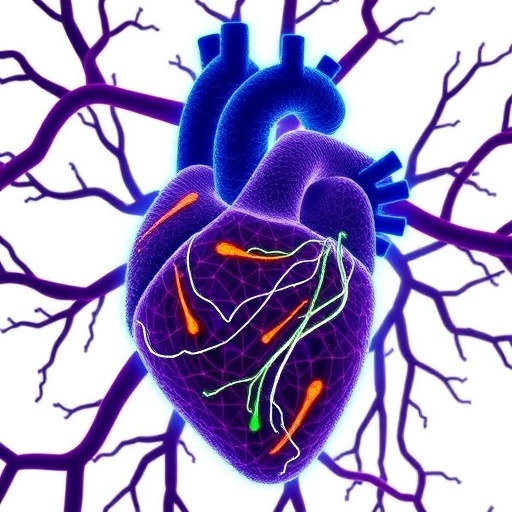Adenovirus is a common virus that causes infectious diseases of the respiratory tract, eyes and gastrointestinal tract in humans and animals. Researchers at Umeå University study molecular mechanisms of infection in order to understand how adenovirus causes disease.
The researchers in Umeå, together with research groups from Germany, the UK and Hungary, have now discovered a new type of mechanism used by a rare adenovirus type to attack cells.
Human Adenovirus type 52 (HAdV-52) is one of the few adenoviruses that has two different types of fiber proteins on its surface, which are 'used' by the virus for the attachment to target cells. In collaboration with researchers in the Glycosciences Laboratory at Imperial College in London, who are world leading in the research field of glycobiology, the scientists have shown that the shorter fiber binds to an unusual type of carbohydrate-based receptor, polysialic acid (a long chain of repeated sialic acids). Annasara Lenman working with Niklas Arnberg has subsequently corroborated that HAdV-52 binds to polysialic acid on target cells, and that this leads to infection. In collaboration with experts in structural biology at the University of Tübingen, the interaction between the short fiber and polysialic acid has been mapped at the atomic level.
"We knew earlier that the short fiber binds to sialic acid, but not how the underlying carbohydrate chain was constructed," explains Annasara Lenman postdoc at the Department of Clinical Microbiology and The Laboratory for Molecular Infection Medicine Sweden (MIMS) at Umeå University, Sweden.
As polysialic acid is overexpressed on cancer cells in the brain and lungs, our findings could open new possibilities to use HAdV-52 for treatment for the corresponding types of cancer.
For a long time, adenovirus and other viruses have been considered suitable weapons for the treatment of different types of cancer. Viruses can kill cancer cells themselves, but in recent years it has also been understood that a virus infection in a tumor can activate the immune system against the cancer cells. You can also "arm" viruses with different genes that can for example counteract the development of resistance against different drugs. A major challenge has been to target viruses specifically against the cancer cells.
"Most adenoviruses tested so far have only one type of cell-binding fiber. HAdV-52 has two different fibers, one of which has a natural predilection for cancerous cells that express polysialic acid. This opens up a more effective harnessing of viruses against the right kind of cells", Annasara Lenman explains.
The results can also be of importance in other research areas:
"Perhaps the most important function of polysialic acid is its contribution to the brain's development. However, one has not known much about how polysialic acid interacts with its environment. Our research makes it pertinent to investigate whether polysialic acid plays a part in brain development by interacting with specific cellular molecules." says Annasara Lenman.
###
The study, which is now published in PNAS involved experts in glycobiology at Imperial College in London, UK; structural biology, University of Tübingen, Germany; molecular simulation, Biognos, Gothenburg, Sweden; and animal virology, Institute for Veterinary Medical Research, Budapest, Hungary.
Original Publication:
Annasara Lenman, A. Manuel Liaci, Yan Liu, Lars Frängsmyr, Martin Frank, Bärbel S. Blaum, Wengang Chai, Iva I. Podgorski, Balázs Harrach, Mária Benkö, Ten Feizi, Thilo Stehle, and Niklas Arnberg (2018): Polysialic acid is a cellular receptor for human adenovirus 52 PNAS 19 April 2018 (PNAS April 19, 2018. published ahead of print April 19, 2018. https://doi.org/10.1073/pnas.1716900115)
Researchers involved in the study:
* Manuel Liaci, Bärbel S. Blaum, Thilo Stehle University of Tübingen, Germany (Thilo Stehle, Vanderbilt University School of Medicine)
* Yan Liu, Wengang Chai, Ten Feizi, Imperial College London, UK
* Martin Frank, Biognos AB
* Iva I. Podgorski, Balázs Harrach, Mária Benkö, Hungarian Academy of Sciences, Budapest, Hungary (Iva I. Podgorski, Rudjer Boskovic Institute, Zagreb, Croatia)
The studies at Imperial College, Umeå University, and Tubingen were funded by the Wellcome Trust, the Swedish Research Council, and Baden-Württemberg Foundationrespectively
Contact:
Annasara Lenman, postdoctoral fellow, Department of Clinical Microbiology,
The Laboratory for Molecular Infection Medicine Sweden (MIMS)
Umeå University
+46 70 5977743
[email protected]
Niklas Arnberg, professor,
Department of Clinical Microbiology
The Laboratory for Molecular Infection Medicine Sweden (MIMS)
Umeå University
[email protected]
+46 90-785 84 40
http://www.climi.umu.se/english/research/niklas-arnberg–english-/
http://www.mims.umu.se/groups/niklas-arnberg.html
Picture of Annasara Lenman for download, photographer Andreas Lenman https://mediabank.umu.se/detail/Annasara+Lenman/10565
Picture of Niklas Arnberg for download; photographer Mattias Pettersson https://mediabank.umu.se/detail/Niklas+Arnberg/10695
Viruspicture: Mostphotos
Media Contact
Niklas Arnberg
[email protected]
46-907-858-440
@UmeaUniversity
http://www.umu.se/umu/index_eng.html
http://www.mims.umu.se/news-events/1868-treatment-of-cancer-could-become-possible-with-adenovirus.html
Related Journal Article
http://dx.doi.org/10.1073/pnas.1716900115




